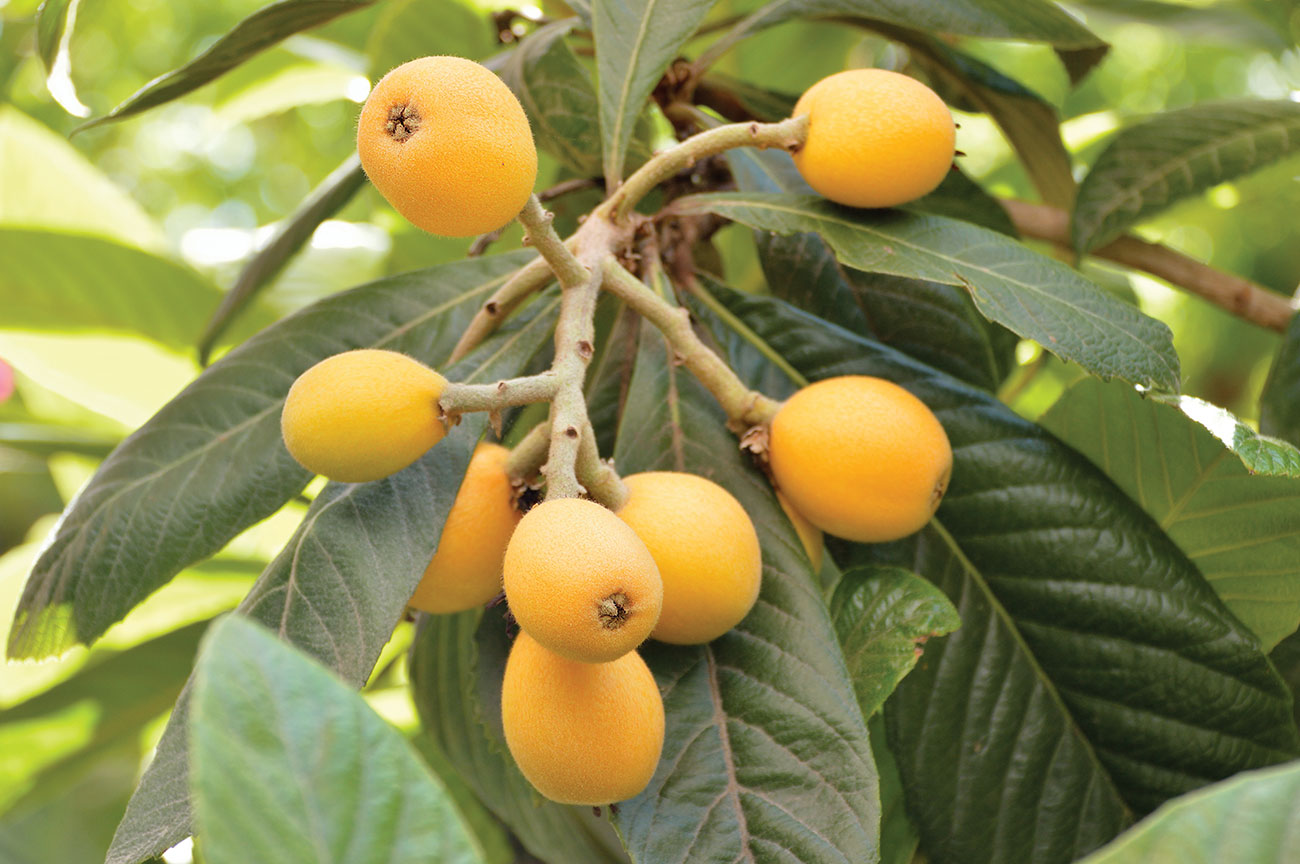
When my husband and I retired to coastal Alabama some years ago, we marveled at an attractively shaped, deep green tree we found growing here. With its whirls of glossy foliage and a naturally pleasing shape and its small round or pear-shaped fruits in hues of yellow and orange, it was a mysterious beauty to behold. Enough folks had them growing in their gardens that we soon found out that what we were admiring was the luscious loquat tree (Eriobotrya japonica), a native of China.
Loquats arrived in America by way of Charleston, South Carolina, in the 1850s and were sold at nurseries across the Southeast, from North Carolina to Texas. The versatile, but often underutilized, fruit has attracted the attention of Southern chefs in recent years who feature it in everything from loquat liqueur to flavorful ice creams and in sauces accompanying savory dishes.
Loquats are members of the rose family, along with apples, strawberries and pears. The tree’s charming silhouette makes it an excellent ornamental lawn specimen. It produces small round or pear-shaped fruits, rarely more than two inches long. The yellow or orange flesh of the loquat can be sweet or slightly acidic in flavor, but when peeled and eaten fresh off the tree, they are quite tasty — somewhat like the combination of a peach and mango. They make for excellent jams, jellies, preserves, cobblers or pies. Just one self-pollinating variety can provide an ample yield.
Loquats are well adapted to subtropical and mild temperatures, making it a darling in our Southern coastal climate. With its impressive, tropical-looking foliage, the tree can be grown primarily as an ornamental, with sweet-scented flowers. But why overlook the deliciousness of the fruit? Loquats dangle in fragrant clusters from the tree to announce spring all across the South.
The Lowdown on Loquats
WHERE TO PLANT
Choose a sunny location away from other trees, structures and power lines. Loquats can tolerate partial shade but flowers and fruits will be reduced.
WHAT TO EXPECT
Loquats grow rapidly and can reach up to 30 feet. Prune to 15 feet to make harvesting fruit easier. They have a lifespan between 20 – 30 years.
HOW TO CARE
Loquat thrive on good nutrition, water management and weed control. Fertilize the tree a couple of times a year with a lawn fertilizer that contains no weed killers. Water the loquat tree when the blossoms begin to swell in the spring. Apply water slowly to allow to
sink into the soil. A layer of mulch will help keep pesky weeds away.
MAKING FRUIT
Look for a self-pollinating variety to ensure a good crop.
WHEN TO PICK
The fruit is ready to pick when it turns a golden apricot color. Don’t let the birds beat you to the fruit in early spring — you will surely have a fight on your hands!
Get Cooking
The loquat’s small, golden fruit can be used in many creative culinary ways:
• High pectin levels and a natural sweetness make for excellent jams and chutneys.
• Blend with yogurt and milk for a lassi or other fruits and juice for a smoothie.
• Combine with ginger and soy for a honey-sweet glaze on chicken.
• Poach fruit and serve on a shortcake biscuit with a dollop of homemade whipped cream to wake up a sleepy palate.
Cheryl Albin “Dooley” Berry writes for Gulf Coast News in Baldwin County and lives with husband Scott and English mastiff Happy in Spanish Fort.





